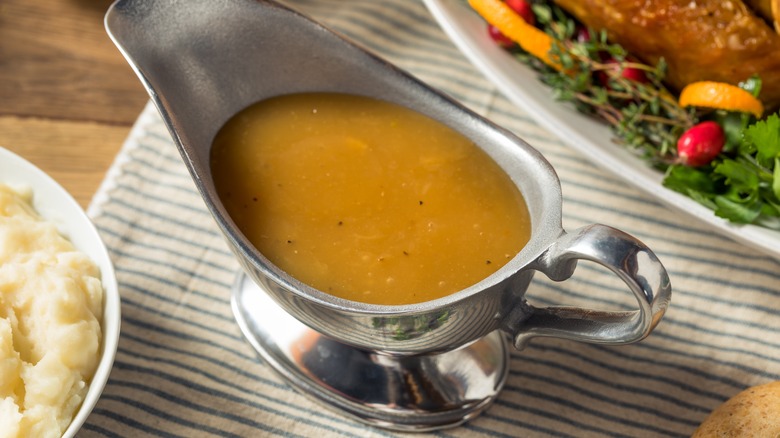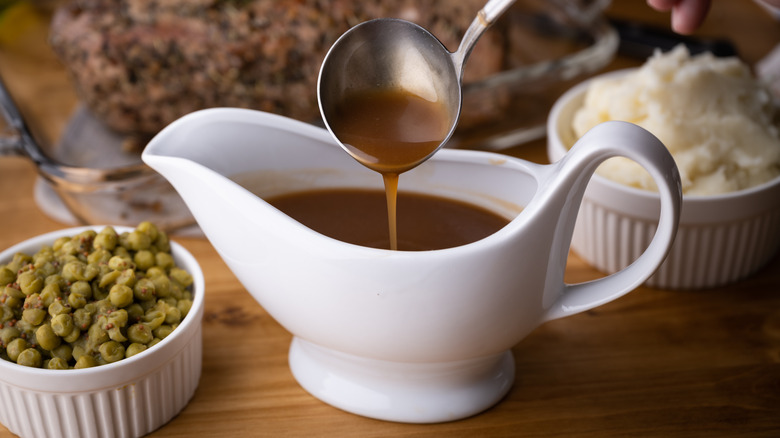You Can Thicken Gravy Without A Slurry, But It's Not Quick
Is there anything more disappointing than cooking a perfectly tender hunk of meat or glistening roasted vegetables, only to find that the gravy to go with them is as thin and runny as water? Sadly, it's a common mistake that everyone makes when cooking gravy. One of the quickest solutions in this scenario is to whisk in a few tablespoons of slurry. But what if you don't have any flour or cornstarch on hand? Well, there's another way, and it involves pureed vegetables.
Granted, this method takes longer than a slurry because you'll need to cook the vegetables first, but it works fabulously. In fact, even Alex Guarnaschelli uses vegetables roasted in turkey drippings as the base for her make-ahead gravy. Besides, there's the added bonus of pureed vegetables making your gravy just a touch more nutritious.
To try this, start by picking the right vegetables. Starchy root vegetables work best here — think potatoes, carrots, and parsnips. Cut your chosen veggies, roast them in the oven, and then puree them in a food processor or blender. Stir this mixture into the gravy and keep simmering until it starts to thicken. The only catch here is that unlike slurry, pureed vegetables will add their own flavor to the gravy. This isn't always a bad thing, especially since root vegetables can bring an earthy depth, but it's something to keep in mind.
More ways to thicken a runny gravy
There are many other ways to thicken gravy without using slurry — or pureed vegetables, for that matter. One of the simplest methods is to let your gravy simmer longer on the stove to create a reduction. Leave the gravy uncovered as it simmers, and the liquid will eventually reduce, leaving you with a thicker gravy. That being said, you may find it's a bit saltier, as reducing can throw off the water-to-sodium balance.
If that's a concern — or if the gravy still hasn't thickened after 10 or so minutes of simmering — it may be best to consider another solution. Luckily, there are plenty of other options. One alternative is to use ground flax seeds — yes, they too can give your gravy a richer viscosity. Mix the ground seeds in some water and let the mixture sit for about five minutes until it looks a little gummy. Stir this into the pot of gently bubbling liquid, and your gravy will be perfectly nappant in no time — the French term for gravy thick enough to coat the back of a spoon.
Lastly, you can use the same beurre manié technique that's used to thicken soups. Knead equal parts flour and softened butter into a ball, and pop that into the simmering gravy — that's all it takes!


